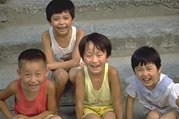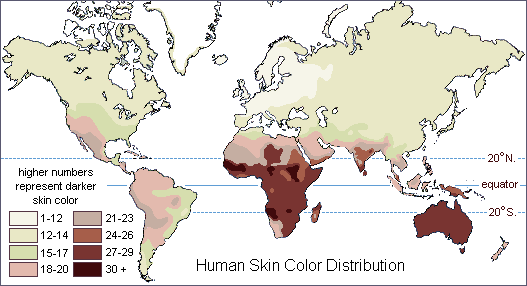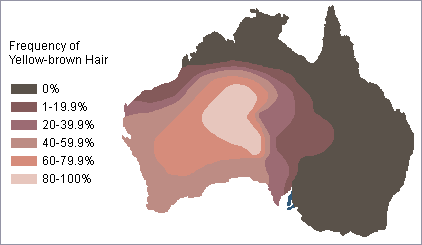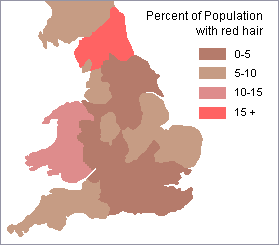 |
|
Similar appearance of
children |
With the
exception of monozygotic twins, every one of
us is genetically different from every other human whoever lived. Each of us is
unique in terms of the combination of tens of thousands of genetically determined
characteristics that we possess. However, we clearly
have some traits in common with other people. Most of us have readily
identifiable male or female sexual characteristics which we share with
others of our gender. People who are closely related to each
other usually have even greater similarity
in appearance because much of their genetic makeup is
shared. Unrelated people
whose ancestors came from the same part of the world often are generally similar in terms of
such body features as skin and hair color, facial characteristics, body shape, and
stature. Not surprisingly, these traits have a strong genetic
component as well.
However, they can be affected by environmental influences. For instance, skin color
often can be darkened, or tanned, seasonally by prolonged exposure to ultraviolet radiation from the sun.
Likewise, stature can be affected by nutrition. When young children do
not receive sufficient calories in their diet, especially protein, their
growth is likely to be stunted--they will not reach their full
genetically programmed height.
Humans like to classify and
use identity labels for people and things with which we come in contact.
It satisfies our apparent need for a sense of order. In addition to
gender and age, most of us readily classify each other into
distinct categories on the basis of what we consider to be
races. In North America, people usually think in terms of
Black, White, Asian, Hispanic or Latino, and Indian or
Native American. These are all
archaic concepts of physical types that have little biological reality.
Academics may use more
sophisticated sounding terms for these perceived biological groupings, such as Negroid
![]() , Caucasoid
, Caucasoid
![]() or Caucasian
or Caucasian
![]() , and Mongoloid
, and Mongoloid
![]() . Nevertheless, they
are still bad science. However,
they are important to contemporary life in North America because they reflect
culturally defined
differences in our society.
They
are essentially labels
of ethnicity
that are used for categorizing and discriminating.
. Nevertheless, they
are still bad science. However,
they are important to contemporary life in North America because they reflect
culturally defined
differences in our society.
They
are essentially labels
of ethnicity
that are used for categorizing and discriminating.
We now know that clearly distinct human biological races do not now exist. This does not mean that our species is lacking anatomical and physiological variation between populations. Rather, the true nature of that variation is far more complex. It does not correspond to commonly believed simple racial lines.
The physical traits that we think of as clustering together among particular peoples often have much broader distributions. They continue well outside of the geographic areas in which a "race" is stereotypically supposed to exist. For instance, dark brown skin is usually thought of as the key trait in distinguishing sub-Saharan Africans from people elsewhere in the world. However, dark brown skin is also found in parts of southern Asia, Australia, New Guinea and on the nearby islands of Melanesia.
 |
|
(Data for native populations collected by R. Biasutti prior to 1940.) |


